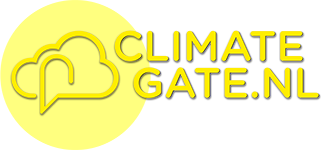
Klimaatbluf? Onze nationale klimaatpaus Pier Vellinga stuurt petities rond met het WWF
Uit Climategate blijkt dat de scheidslijn tussen politiek en wetenschap dun is bij veel CRU-medewerkers en collega’s. Maar de intensiteit van hun activisme verbleekt bij onze eigen nationale klimaatkampioen Pier Vellinga. De huidige programmaleider van het 100 miljoen euro kostende Klimaat voor Ruimte krijgt klop van collega’s als hij weer eens een petitie rondstuurt.
Uit de emails van climategate blijkt dat klimaatwetenschappers elkaar regelmatig kettingbrieven sturen, met verzoek om elkaar’s handtekening zodat media en politici meer onder de indruk zijn van het wetenschappelijke gewicht van de statement. Maar soms wordt het ook alarmisten te gortig. Bijvoorbeeld wanneer ze petities van de Wagenings/Amsterdamse klimaatpaus Pier Vellinga en medewerker Jan Goudriaan voor de neus krijgen.
In aanloop naar Kyoto wil Vellinga met nog 10 vrienden een petitie rondsturen, samen met het Wereldnatuurfonds waarin staat dat ‘het laatste IPCC-rapport ook economisch overtuigend laat zien dat directe controle van emissies nodig is’. Te weinig en te late actie zou astronomische kosten meebrengen. Dit schiet zelfs Tom Wigley van de Universiteit van Colorado in het verkeerde keelgat, in het dagelijks leven toch niet vies van een rampje meer of minder.
Dear Eleven,
I was very disturbed by your recent letter, and your attempt to get
others to endorse it. Not only do I disagree with the content of
this letter, but I also believe that you have severely distorted the
IPCC “view”This is a complex issue, and your misrepresentation of it does you a
dis-service. To someone like me, who knows the science, it is
apparent that you are presenting a personal view, not an informed,
balanced scientific assessment. What is unfortunate is that this will not
be apparent to the vast majority of scientists you have contacted. In
issues like this, scientists have an added responsibility to keep their
personal views separate from the science,No scientist who wishes to maintain respect in the community should ever
endorse any statement unless they have examined the issue fully
themselves. You are asking people to prostitute themselves by doing just
this! I fear that some will endorse your letter, in the mistaken belief
that you are making a balanced and knowledgeable assessment of the science
— when, in fact, you are presenting a flawed view that neither accords
with IPCC nor with the bulk of the scientific and economic literature on
the subject.Let me remind you of the science.
Au!
Wigley gaat dan in op de analyse die hij maakte in Nature in zijn paper ‘Economic and environmental choices in the stabilisation of atmosferic CO2 concentrations’, uit 1996. Hier vergelijkt hij het onmiddelijke actie-scenario met stabilisatie en business as usual. Bij onveranderd beleid zou de CO2-concentratie in 2200 boven de 1000 ppm stijgen. Wigley gaat later in Geophysical Research Letters in 2001 verder in op dit scenario. Volgens Wigley moet je ook de maatschappelijke kosten van directe actie meenemen in de analyse, iets dat Vellinga en co nalaten. Juist die directe kosten zijn veel makkelijker te berekenen, dan eventuele economische gevolgen in het jaar 2200.
Of zoals Wigley schrijft
Our ability to quantify the economic consequences of “too much, too soon” is far better than our ability to quantify the impacts that might arise from “too little, too late” — to
the extent that we cannot even define what this means!
Klimaatschadeclaim
Je kunt niet voorspellen wat het verschil tussen 1000 en 550 ppm de wereld gaat kosten, want de impact van beide scenario’s is over langere tijd steeds lastiger te voorspellen. In de GRL-paper wordt gerept over een gemiddeld temperatuurverschil tussen beide scenario’s van 0,3 graden, met 12 graden verschil aan de polen. Volgens Wigley is dat verschil relatief klein. En dus dien je voorzichtig te zijn met klimaatschadeclaims over lange termijn.
Knappe koppen
Moraal van het verhaal: onze eigen Al Gore Pier Vellinga gaat in zijn klimaatbluf verder dan andere meer alarmistisch ingestelde wetenschappers . En hij is nu aanvoerder van ons meest omvangrijke klimaatprogramma van de Universiteit Wageningen, ECN, RIVM, goed voor 100 miljoen euro aan klimaatgebuffer. Ach, het zal ongetwijfeld beter terecht komen dan de staatssteun aan banken.
Ook met de nuances van Wigley blijft het overigens erg knap dat wetenschappers voor het jaar 2200 al kunnen voorspellen hoe de wereld er uit ziet. En hoe ze hierop nu alvast moeten inspelen. Dat hadden ze bij de kredietcrisis ook moeten doen, want nu is er nauwelijks nog geld over om actie te voeren.






Goede brief van Tom Wigley. Is bekend wie die Eleven zijn? En is de petitie ergens (in) te zien?
vr.gr. Rob (klimaatgek.nl)
Wetenschap voor De Goede Zaak
Naast Vellinga en Goudriaan zat ook Hans Opschoor er bij, milieu-econoom aan de VU en toen directeur van het ISS.
Daarnaast deed Rob Swart mee van het RIVM, Rob Swart kom je erg vaak tegen bij het sturen van kettingbrieven. Ze stemmen de publicatiedatum van hun actiepamfletten af met Greenpeace: misschien ook nog aardig om over te bloggen. Zo kwam ik deze statement nog tegen
Subject: Timing, Distribution of the Statement
Date: Thu, 9 Oct 1997 18:52:33 0100
Reply-to: alcamo@xxxxxxxxx.xxx
Mike, Rob,
Sounds like you guys have been busy doing good things for the cause.
I would like to weigh in on two important questions —
Distribution for Endorsements —
I am very strongly in favor of as wide and rapid a distribution as
possible for endorsements. I think the only thing that counts is
numbers. The media is going to say "1000 scientists signed" or "1500
signed". No one is going to check if it is 600 with PhDs versus 2000
without. They will mention the prominent ones, but that is a
different story.
Conclusion — Forget the screening, forget asking
them about their last publication (most will ignore you.) Get those
names!
Timing — I feel strongly that the week of 24 November is too late.
1. We wanted to announce the Statement in the period when there was
a sag in related news, but in the week before Kyoto we should expect
that we will have to crowd out many other articles about climate.
2. If the Statement comes out just a few days before Kyoto I am
afraid that the delegates who we want to influence will not have any
time to pay attention to it. We should give them a few weeks to hear
about it.
3. If Greenpeace is having an event the week before, we should have
it a week before them so that they and other NGOs can further spread
the word about the Statement. On the other hand, it wouldn't be so
bad to release the Statement in the same week, but on a
diffeent day. The media might enjoy hearing the message from two
very different directions.
Conclusion — I suggest the week of 10 November, or the week of 17
November at the latest.
Mike — I have no organized email list that could begin to compete
with the list you can get from the Dutch. But I am still
willing to send you what I have, if you wish.
Best wishes,
Joe Alcamo
Rypke Zeilmaker: erg netjes van je om het alcamo-mailadres niet volledig weer te geven. Maar zoveel mededogen met een professor die zulke geniepige demagogie propageert, verdient hij niet.
Dus hier het hele mail-adres:
alcamo@usf.uni.kassel.de
Dat is gewoon te googlen, zie:
http://www.scribd.com/doc/23771390/From-Joseph-Al…
Wordt het tijd voor een zwarte lijst? Pier Vellinga komt in ieder geval ver bovenaan te staan. We kunnen ook een kaartspel maken, zoals de Amerikanen deden na de golfoorlog. In de regenten tijd in Holland liep de volkswoede nog wel eens uit de hand, maar pek met veren moet toch nog wel kunnen over een paar jaar?
heb je geen co2 neutrale vervanger voor je pek.
De "science is settled" was het toch?
Laten we ze op hun woord geloven en de hele rambam aan klimaatorgasten als overbodig de laan uit sturen.
Leest er een parlementarier mee?
Tijd voor vragen over niet-werkgerelateerde bezigheden van betrokkenen in door de overheid betaalde tijd.